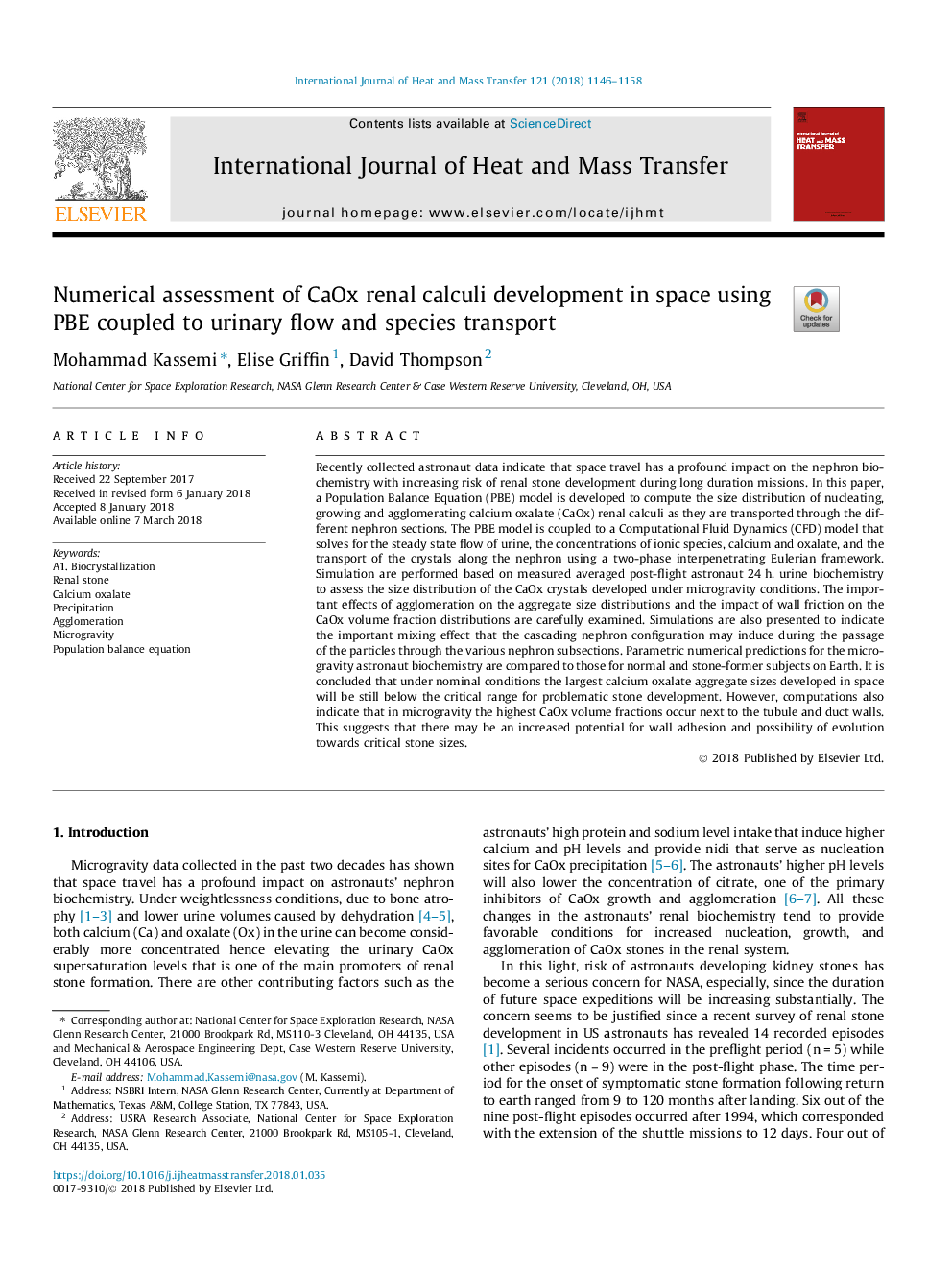| کد مقاله | کد نشریه | سال انتشار | مقاله انگلیسی | نسخه تمام متن |
|---|---|---|---|---|
| 7054580 | 1458019 | 2018 | 13 صفحه PDF | دانلود رایگان |
عنوان انگلیسی مقاله ISI
Numerical assessment of CaOx renal calculi development in space using PBE coupled to urinary flow and species transport
دانلود مقاله + سفارش ترجمه
دانلود مقاله ISI انگلیسی
رایگان برای ایرانیان
کلمات کلیدی
موضوعات مرتبط
مهندسی و علوم پایه
مهندسی شیمی
جریان سیال و فرایندهای انتقال
پیش نمایش صفحه اول مقاله

چکیده انگلیسی
Recently collected astronaut data indicate that space travel has a profound impact on the nephron biochemistry with increasing risk of renal stone development during long duration missions. In this paper, a Population Balance Equation (PBE) model is developed to compute the size distribution of nucleating, growing and agglomerating calcium oxalate (CaOx) renal calculi as they are transported through the different nephron sections. The PBE model is coupled to a Computational Fluid Dynamics (CFD) model that solves for the steady state flow of urine, the concentrations of ionic species, calcium and oxalate, and the transport of the crystals along the nephron using a two-phase interpenetrating Eulerian framework. Simulation are performed based on measured averaged post-flight astronaut 24â¯h. urine biochemistry to assess the size distribution of the CaOx crystals developed under microgravity conditions. The important effects of agglomeration on the aggregate size distributions and the impact of wall friction on the CaOx volume fraction distributions are carefully examined. Simulations are also presented to indicate the important mixing effect that the cascading nephron configuration may induce during the passage of the particles through the various nephron subsections. Parametric numerical predictions for the microgravity astronaut biochemistry are compared to those for normal and stone-former subjects on Earth. It is concluded that under nominal conditions the largest calcium oxalate aggregate sizes developed in space will be still below the critical range for problematic stone development. However, computations also indicate that in microgravity the highest CaOx volume fractions occur next to the tubule and duct walls. This suggests that there may be an increased potential for wall adhesion and possibility of evolution towards critical stone sizes.
ناشر
Database: Elsevier - ScienceDirect (ساینس دایرکت)
Journal: International Journal of Heat and Mass Transfer - Volume 121, June 2018, Pages 1146-1158
Journal: International Journal of Heat and Mass Transfer - Volume 121, June 2018, Pages 1146-1158
نویسندگان
Mohammad Kassemi, Elise Griffin, David Thompson,